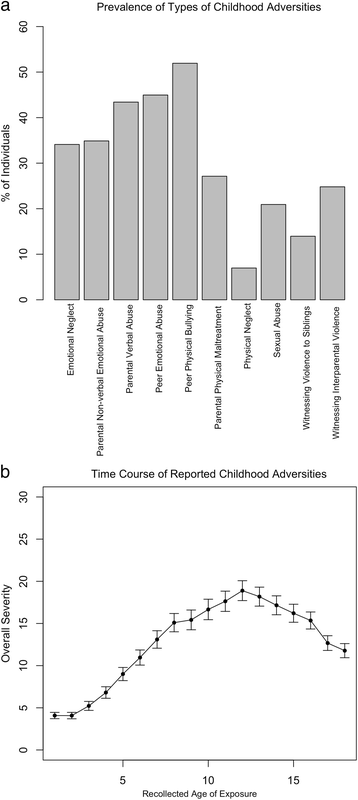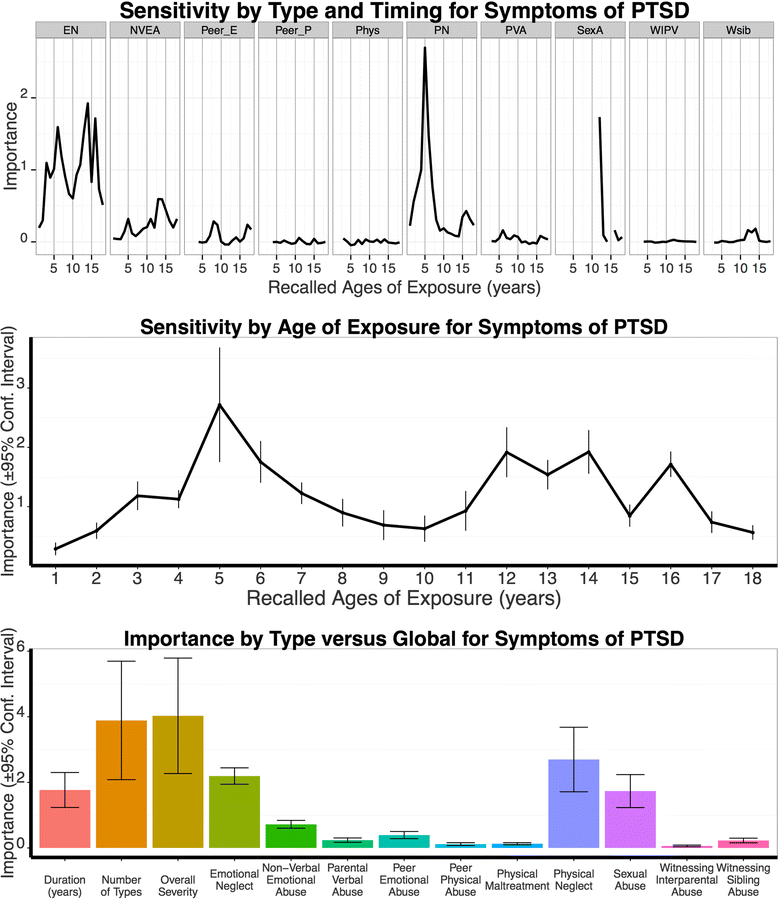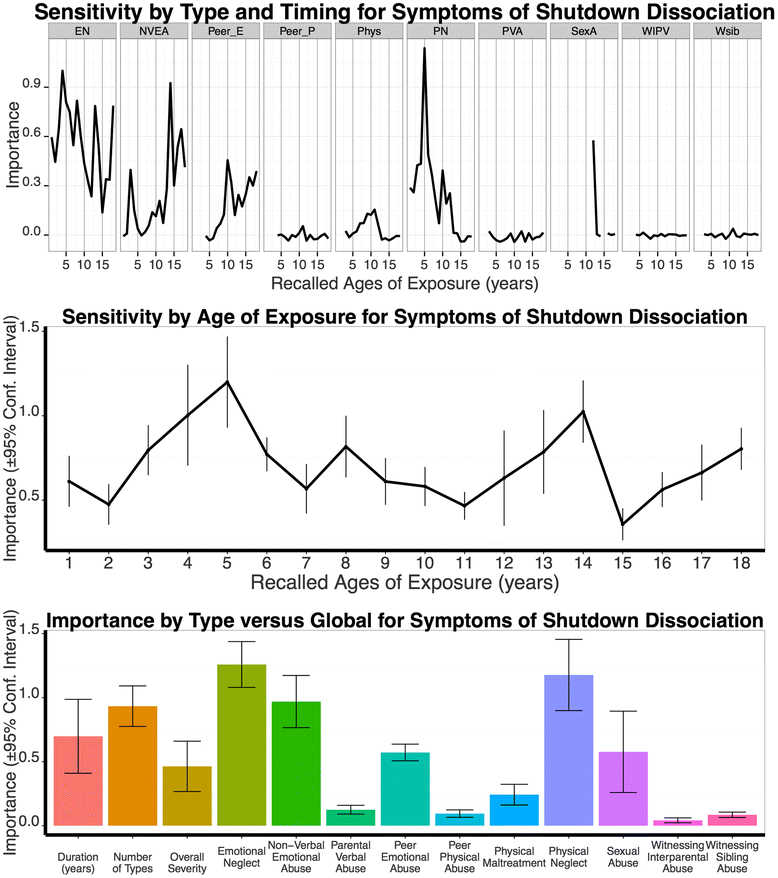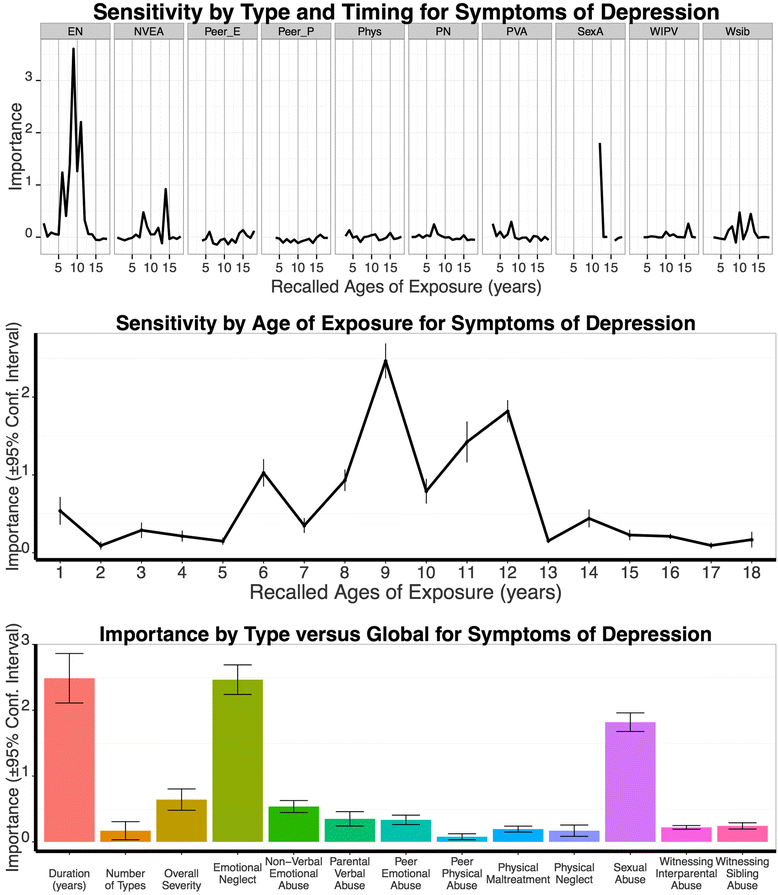Type and timing of adverse childhood experiences differentially affect severity of PTSD, dissociative and depressive symptoms in adult inpatients
- PMID: 27543114
- PMCID: PMC4992284
- DOI: 10.1186/s12888-016-1004-5
Type and timing of adverse childhood experiences differentially affect severity of PTSD, dissociative and depressive symptoms in adult inpatients
Abstract
Background: A dose-dependent effect of Adverse Childhood Experiences (ACE) on the course and severity of psychiatric disorders has been frequently reported. Recent evidence indicates additional impact of type and timing of distinct ACE on symptom severity experienced in adulthood, in support of stress-sensitive periods in (brain) development. The present study seeks to clarify the impact of ACE on symptoms that are often comorbid across various diagnostic groups: symptoms of posttraumatic stress disorder (PTSD), shutdown dissociation and depression. A key aim was to determine and compare the importance of dose-dependent versus type and timing specific prediction of ACE on symptom levels.
Methods: Exposure to ten types of maltreatment up to age 18 were retrospectively assessed in N = 129 psychiatric inpatients using the Maltreatment and Abuse Chronology of Exposure (MACE). Symptoms of PTSD, shutdown dissociation, and depression were related to type and timing of ACE. The predictive power of peak types and timings was compared to that of global MACE measures of duration, multiplicity and overall severity.
Results: A dose-dependent effect (MACE duration, multiplicity and overall severity) on severity of all symptoms confirmed earlier findings. Conditioned random forest regression verified that PTSD symptoms were best predicted by overall ACE severity, whereas type and timing specific effects showed stronger prediction for symptoms of dissociation and depression. In particular, physical neglect at age 5 and emotional neglect at ages 4-5 were related to increased symptoms of dissociation, whereas the emotional neglect at age 8-9 enhanced symptoms of depression.
Conclusion: In support of the sensitive period of exposure model, present results indicate augmented vulnerability by type x timing of ACE, in particular emphasizing pre-school (age 4-5) and pre-adolescent (8-9) periods as sensitive for the impact of physical and emotional neglect. PTSD, the most severe stress-related disorder, varies with the amount of adverse experiences irrespective of age of experience. Considering type and timing of ACE improves understanding of vulnerability, and should inform diagnostics of psychopathology like PTSD, dissociation and depression in adult psychiatric patients.
Keywords: Adult psychopathology; Childhood adversities; Depression; Dose-dependent; PTSD; Shutdown dissociation; Type and timing.
Figures





References
MeSH terms
LinkOut - more resources
Full Text Sources
Other Literature Sources
Medical
Miscellaneous

